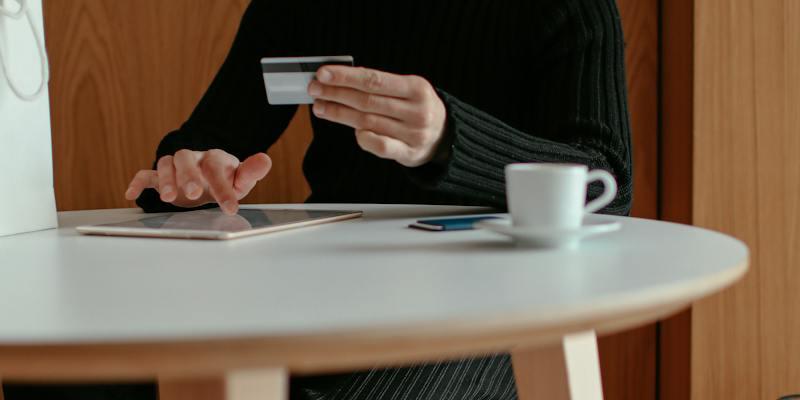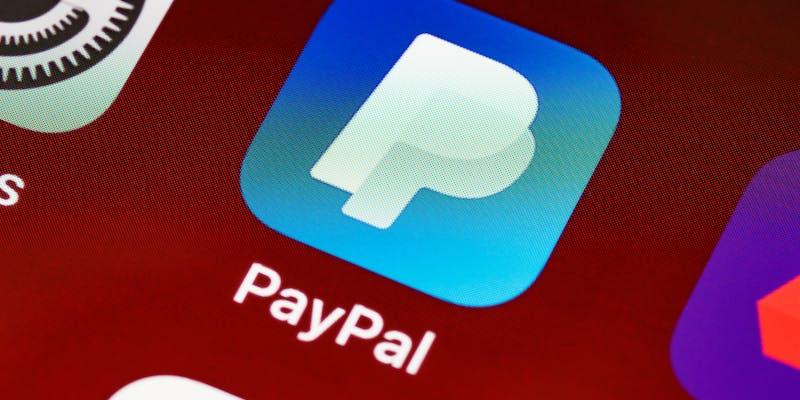Step-by-Step Guide to Linking Your Bank Account with PayPal
Jan 17, 2024 By Susan Kelly
Creating and linking an account is easy and necessary for online financial transactions. Start by creating a PayPal account. This process requires personal information and identity verification to ensure security and financial compliance.
Linking debit and credit cards to PayPal improves payment and withdrawal flexibility. PayPal's linked card transactions comprised 60% of its payment volume 2022, indicating users' preference. PayPal bank account integration is easy and beneficial. Direct PayPal withdrawals simplify financial access. PayPal users who receive freelance work payments can transfer funds to their bank account within 1-2 business days.
Setting Up a PayPal Account
Step 1: Getting Started with PayPal
To begin interacting with PayPal, visit their official website, paypal.com, or obtain their application from the App Store. This preliminary stage is uncomplicated and crucial for individuals of all experience levels who are creating an account from scratch or revising an existing one. The process guarantees a seamless beginning with no complications for the user.
Step 2: Registering
The "Sign Up" button is presented in the upper right corner of the PayPal homepage. This link bank account to PayPal will allow you to create an individual or business account. Choose the one that best fulfills your requirements. If the objective is to oversee transactions to sell products, choose the business account. The individual account is the best option for personal transactions, such as receiving and sending money to and from family and friends,
Step 3: Choosing Account Type
The individual account is ideal for those who plan to use PayPal casually. Select this option and proceed by clicking “Next.” This step is crucial for aligning your account with your intended use, ensuring a smoother financial management experience.
Step 4: Entering Phone Number
You will subsequently be required to enter your phone number. This is a security precaution and a method of maintaining access to your account. Once your number has been entered, click "Next" to proceed.
Step 5: Entering Data
During this phase, you must provide your name and email address and select a password. This data serves as the fundamental basis of your account, guaranteeing the security and individualization of your transactions.
Step 6: Supplementary Information Provision
Upon selecting "Continue," you will be prompted to provide additional, comprehensive personal details, such as your residential address and nationality. By performing this action, your identity can be validated, and your PayPal experience can be customized.
Step 7: Concluding Account Creation
Re-clicking "Continue" will complete the account creation process. This signifies the conclusion of the creation procedure and the start of your PayPal experience.
Step 8: Email Verification
You will ultimately be prompted to verify your address via email. This verification is essential for account activation and security purposes. Upon successful validation, your PayPal account becomes operational.
Linking on PayPal Web

1. Accessing Your Wallet
Navigating to your PayPal Wallet is the first step in linking your bank account. This process is straightforward. After logging into PayPal, locate the Wallet section. This area is crucial as it is the hub for your financial sources, including bank accounts and credit cards.
2. Initiating the Bank Linking Process
You will discover the option to link a new bank account once inside your Wallet. Placing this option in a prominent location facilitates user access. PayPal's interface prioritizes simplicity and intuitiveness, ensuring that even novice users can easily navigate and utilize the system.
3. Selecting Your Bank
PayPal's system is equipped to recognize most major banks, presenting you with a comprehensive list. If your bank isn't immediately visible, a search function is available. Having your bank details handy is advisable to facilitate a smooth process.
4. Choosing the Linking Method
PayPal offers two methods for linking your bank account. The first method involves logging into your online banking, streamlining the process significantly. The alternative method, which does not require online banking, takes a bit longer, typically 2-3 business days, to complete the link.
5. Manual Data Entry
If you choose the manual link bank account to PayPal approach, PayPal will redirect you to a web page where you must enter your bank information. This consists of specifying your account type (checking or savings) and inputting your account number.
6. Finalizing Verification
After entering your bank details, you'll confirm the information and initiate the link. PayPal then sends two small deposits to your bank account, which you should monitor. These deposits, ranging between $0.01 and $0.99, are a verification tool to ensure the connect PayPal to bank account is successful.
Linking Through PayPal App

1. Signing Into PayPal Account
To start linking your bank account with PayPal, the first step is straightforward - sign in to your PayPal account. This is the gateway to managing your financial sources within the app. Having your login credentials ready – your email and password- is essential. This step is of the utmost importance, as it guarantees the security and customization of your financial transactions. It is critical to prioritize the security of your account; therefore, ensure that your login information remains private.
2. Opening Settings
After successfully signing in, locate the small settings icon at the top right corner of your phone's screen. This icon is your access point to various account settings and options. Tapping on it reveals different tabs, such as Personal Info, Public Profile, and Message Center. Each tab plays a specific role in managing different aspects of your PayPal account. This step is about exploring these options and understanding where different functionalities are located within the app.
3. Accessing Banks and Cards
Under the tabs section, you'll find another tab labeled "Banks and Cards." This is where PayPal consolidates all your linked financial sources – credit and debit card information. Clicking this tab takes you to a page that displays your existing financial links. This step is important for adding new banking details or managing existing ones. It's a central hub for all your linked bank accounts and cards.
4. Adding a Bank Account
In the Banks and Cards section, a plus sign symbol at the top right corner is your cue to add new financial information. Clicking this symbol opens a new screen with options to link a Bank Account or a Debit/Credit Card. This flexibility lets you choose the financial source to add to your PayPal account. It's about expanding your PayPal's financial reach.
5. Selecting Bank
Clicking the "Bank Account Link" button takes you to a page listing banks. A search bar at the top helps you find your bank. This step checks your bank's PayPal compatibility—a crucial step for seamless linkage.
6. Linking Bank
Manually linking your bank account or using online banking are both options. Manual linking requires account type, number, and routing number. It takes two to three business days to implement this method. This step lets you choose the easiest way to connect PayPal to bank account.
7. Finalizing
Answering how to link PayPal to bank account, the last step is to fill in your bank details and click the "Agree and Link" button. This is the final checkpoint in confirming and securing your bank account linkage to PayPal. It's about finalizing the process and ensuring everything is set up correctly.

Jan 17, 2024 Susan Kelly

Jan 20, 2024 Triston Martin

Nov 07, 2022 Susan Kelly

Jan 26, 2024 Susan Kelly

Jan 24, 2024 Triston Martin

Jan 23, 2024 Triston Martin